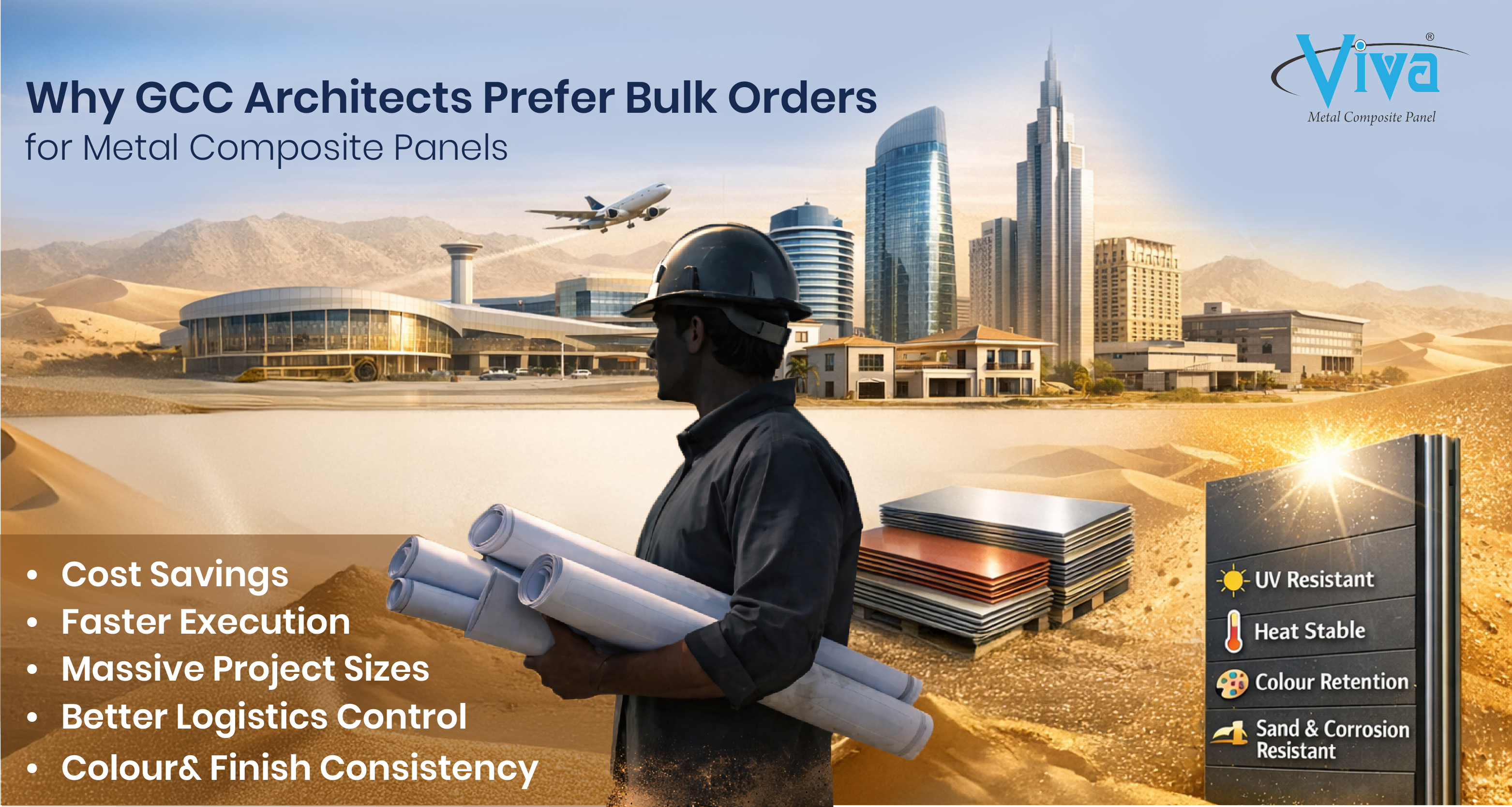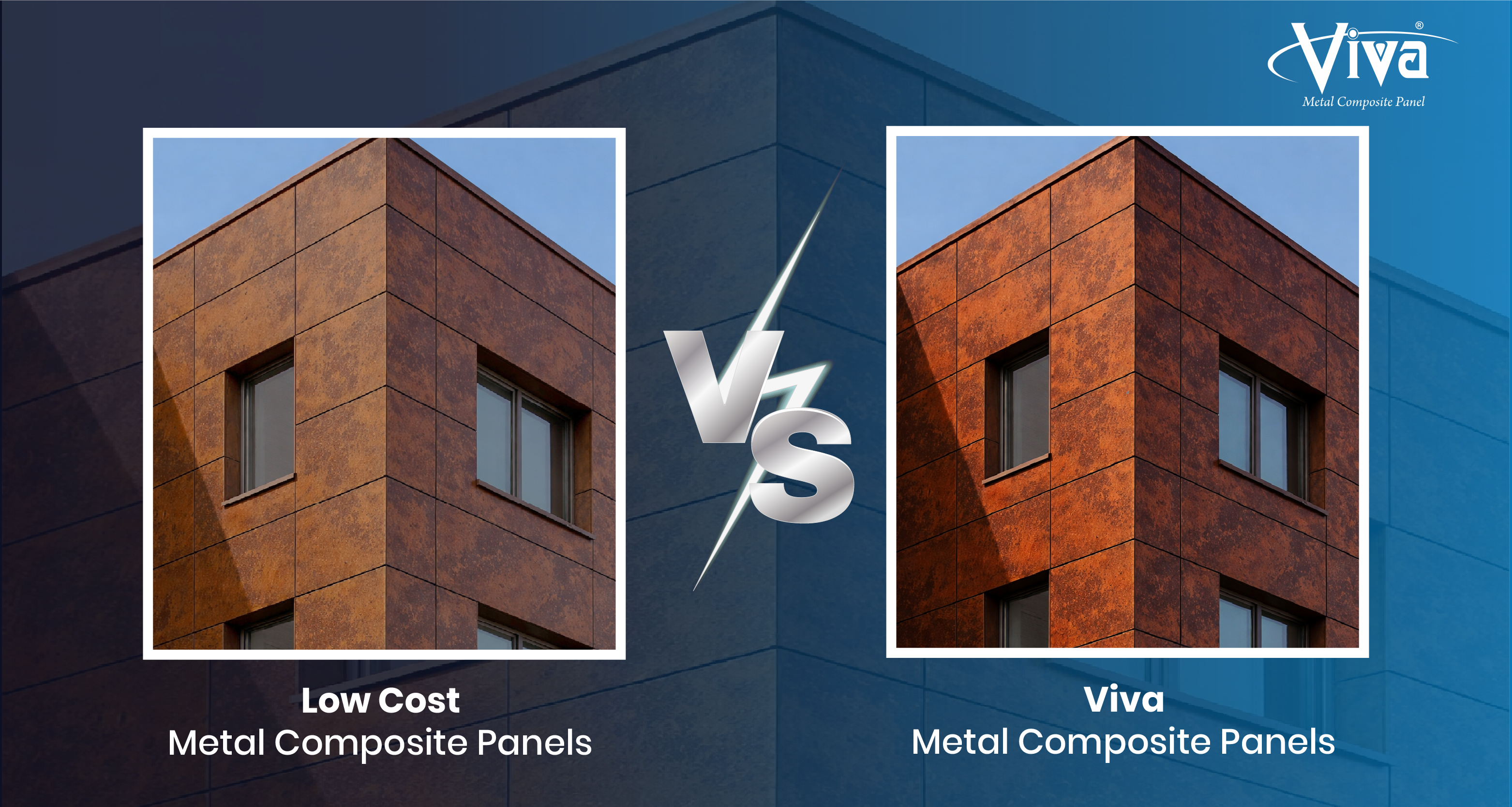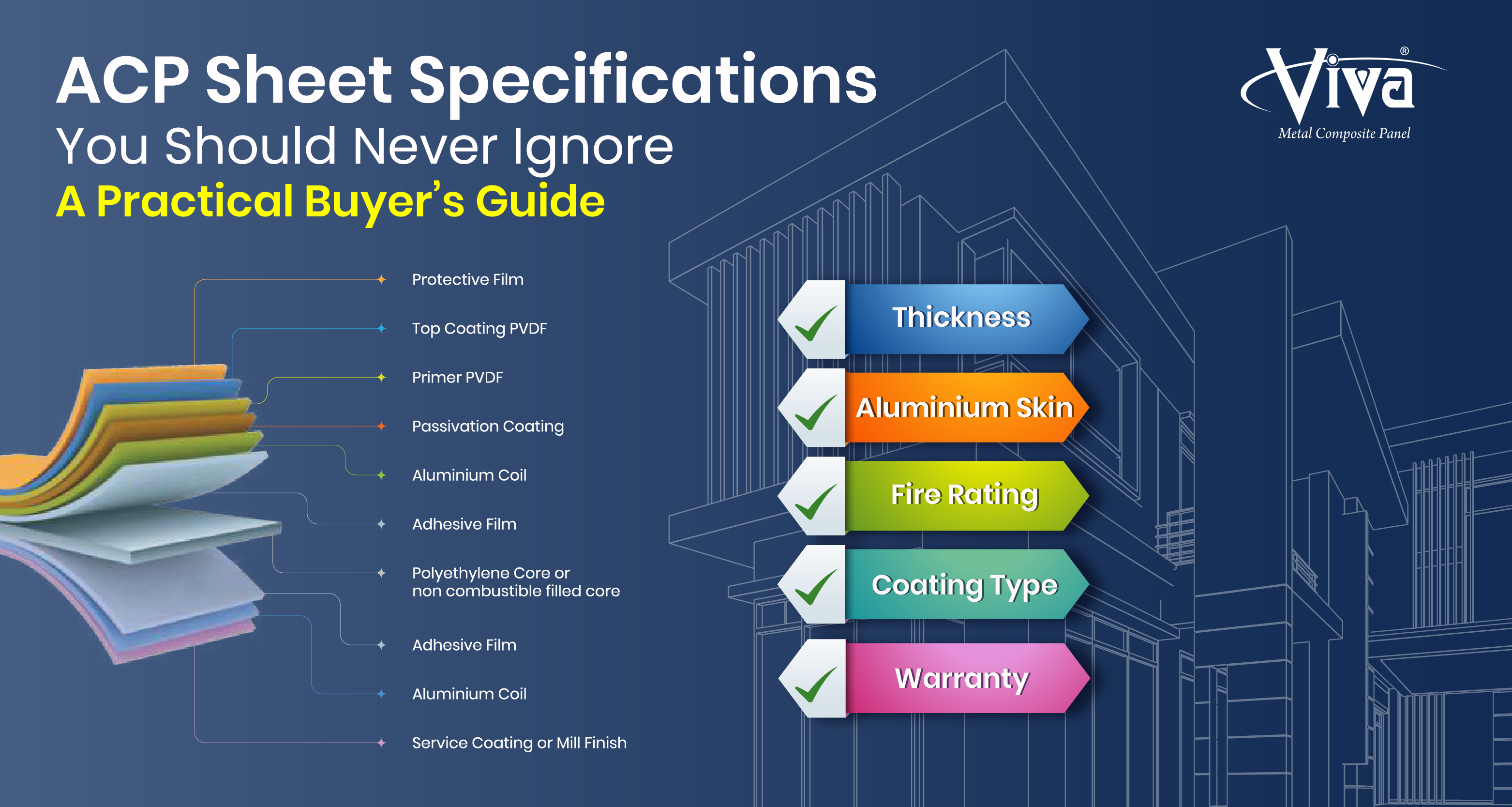
With the reality of the depletion of glaciers, and increasing carbon emissions, eco-consciousness is at the forefront of our minds. Today, when sustainability is of paramount importance, it is vital more than ever to focus on building materials to have positive ecological consequences. One such new-age material is ACP Panel. These Lightweight and long-lasting panels are revolutionizing the way we construct buildings, making them a go-to choice for architects, fabricators, and builders.
From towering skyscrapers to humble residential homes, ACP is the face of changing architecture. If ACP is paving the way for sustainability, Viva ACP is contributing with its commitment to its innovative manufacturing practices. At Viva, we have invested in adopting sustainable solutions for manufacturing high-quality ACP sheets.
How VIVA is Adopting a Sustainable Solution For ACP Sheet Manufacturing?
Advanced Manufacturing Unit:
We pride ourselves on having sustainability at our core. What sets us apart is our commitment to sustainability. Viva as a brand recognises the importance of reducing carbon footprint, which is why we have integrated solar panels into our manufacturing process. The production facility that spans 12 acres is equipped with solar panels for uninterrupted operations. The solar panels produce 850 kWh of energy, responsible for the production of ACP sheets 24 hours and 7 days a week.
Application of Non-Toxic Chemicals and Paints:
To coat the ACP sheets, VIVA uses lead-free paints, as lead is highly toxic. Long-term exposure to lead can affect the lungs, kidneys, liver, and sometimes the brain too. It can also impact marine life if exposed during water discharge. To avoid any such incidents, Viva promotes the application of lead-free paints, and non-toxic mineral cores for the manufacturing of ACP sheets.
Utilisation of Recycled Material:
Viva contributes to a greener future by reducing the carbon footprint. We use recycled polyethylene core that helps us to reduce landfill. Another raw material used for manufacturing ACP sheets, i.e., Aluminium also contributes to a greener environment. It’s because aluminium can also be recycled multiple times without loss of quality. At our manufacturing plant, we utilise the scrapped composite panel’s materials for manufacturing newer panels.

How ACP Sheet Is Promoting a Greener Future in Architecture?
Energy Efficiency and Thermal Insulation:
ACP Panels contribute to energy efficiency in buildings by providing excellent thermal insulation properties. The panels reduce heat transfer, hence helping in maintaining a comfortable indoor environment that reduces the heavy dependency on heating and cooling systems. Consequently, energy consumption is minimized, resulting in lower greenhouse gas emissions and reduced strain on natural resources. With Viva ACP panels, buildings can achieve improved energy efficiency, contributing to a greener and more sustainable future.
ACP Values 3 R’s For Conservation:
Today ACP panels are vital for modern architecture. They have gained immense popularity for their versatility in applications, durability, easy installation, and flexibility. Made of aluminium and polyethylene core with exterior coating, the manufacturing process of ACP panels is far less ecologically degrading. ACP sheets can be manufactured with recycled raw materials, and they can be recycled again and again without loss of quality. So, we already get two R’s for conservation here; Reuse and Recycle. As ACP sheets are long-lasting and known for their durable properties— this promotes the concept of reducing.
Building Passive Architecture:
Passive architecture involves blending the principles of solar and wind energy to build a structure that is capable of living without any heating or cooling system. ACP sheets are popularly included in designing such buildings. Installation of the ventilated façade, perforated/lattice sheets, and cantilever beam help in the introduction of air and natural light indoors that can help in reducing energy consumption. Not only that, a building with ample amount of natural light and air can help in reducing stress, lift one’s mood, and increase productivity.
Durability and Longevity:
Viva's commitment to sustainability extends beyond just the production process. By offering durable and long-lasting ACP panels, the brand contributes to reducing the environmental impact associated with frequent replacements. The panels are resistant to weathering, corrosion, and UV radiation, ensuring they retain their quality and appearance over time. This longevity not only saves resources but also minimizes waste generation, making Viva ACP panels an environmentally responsible choice.
Diminishes Heat Reflection:
ACP Panels are mostly used as external facade material, making them a better choice than materials such as reflective glass. Today, architects are utilising material that promotes sustainable building design, among them, ACP is suitable as it retains the heat and does not reflect back. The sheets are typically coated with PVDF, which has a matte or low-gloss finish, hence reducing the reflection of sunlight. Moreover, these panels are available with a range of textures and finishes, including smooth and brushed textures that help to diffuse or scatter the sunlight rather than reflecting it directly.
Conclusion
Viva's ACP panels stand as a testament to the brand's commitment to sustainability and environmental stewardship. With a range of products such as Aluminum Composite panels, honeycomb panels, rainscreen systems, anti-bacterial ACP sheets, and Zinc composite panels, Viva is leading the way towards a greener environment. Architects, builders, and individuals alike can make a positive impact by choosing Viva ACP panels, knowing that they are contributing to a more sustainable and eco-friendly future.
With Viva's innovative and environmentally conscious approach, it is clear that ACP panels can go beyond their versatile applications and become a catalyst for positive change in the construction industry. Together, we can build a greener world, one panel at a time.
You might also prefer: Why ACP Panel Fascinated Indian Architects

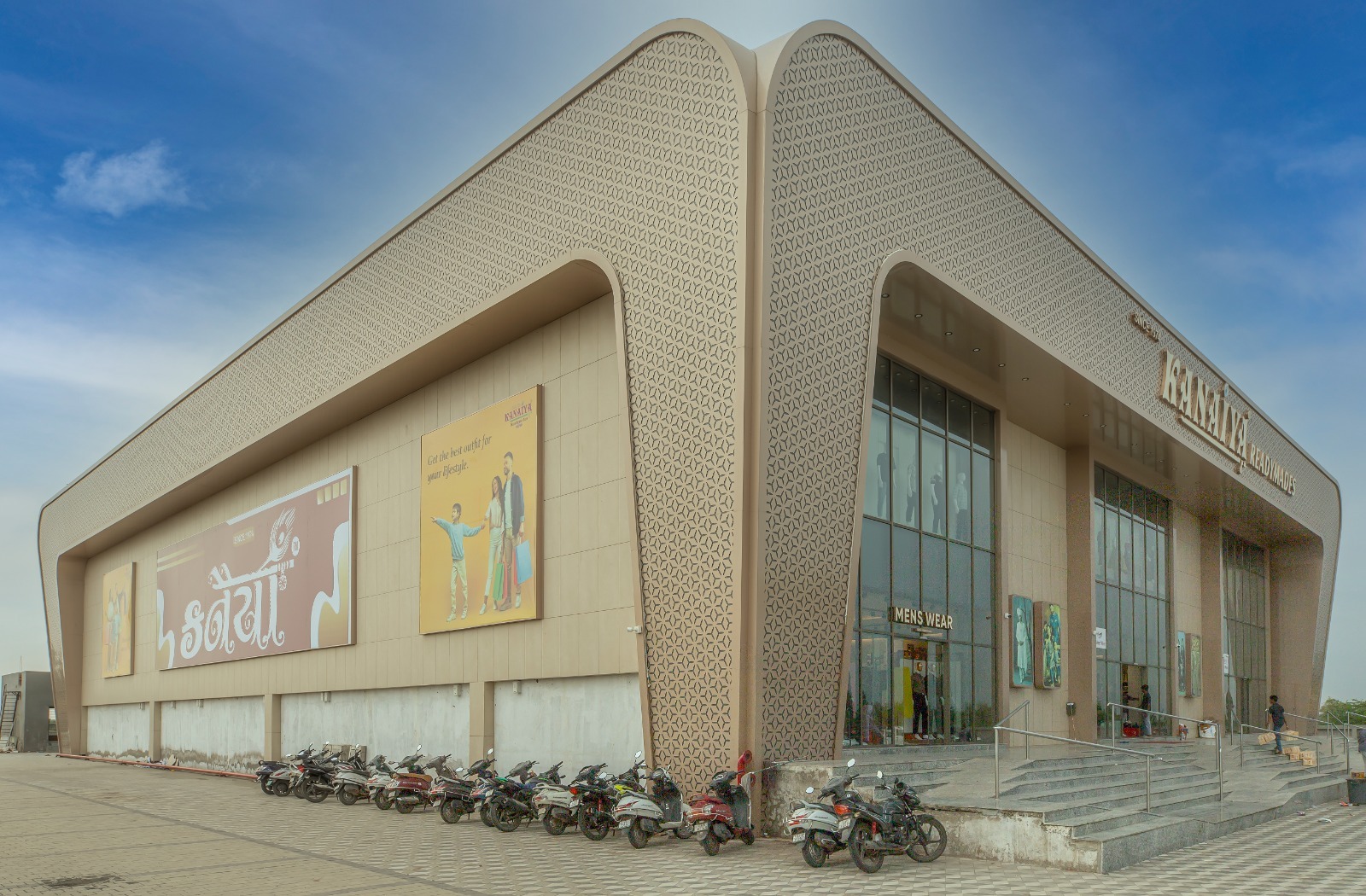
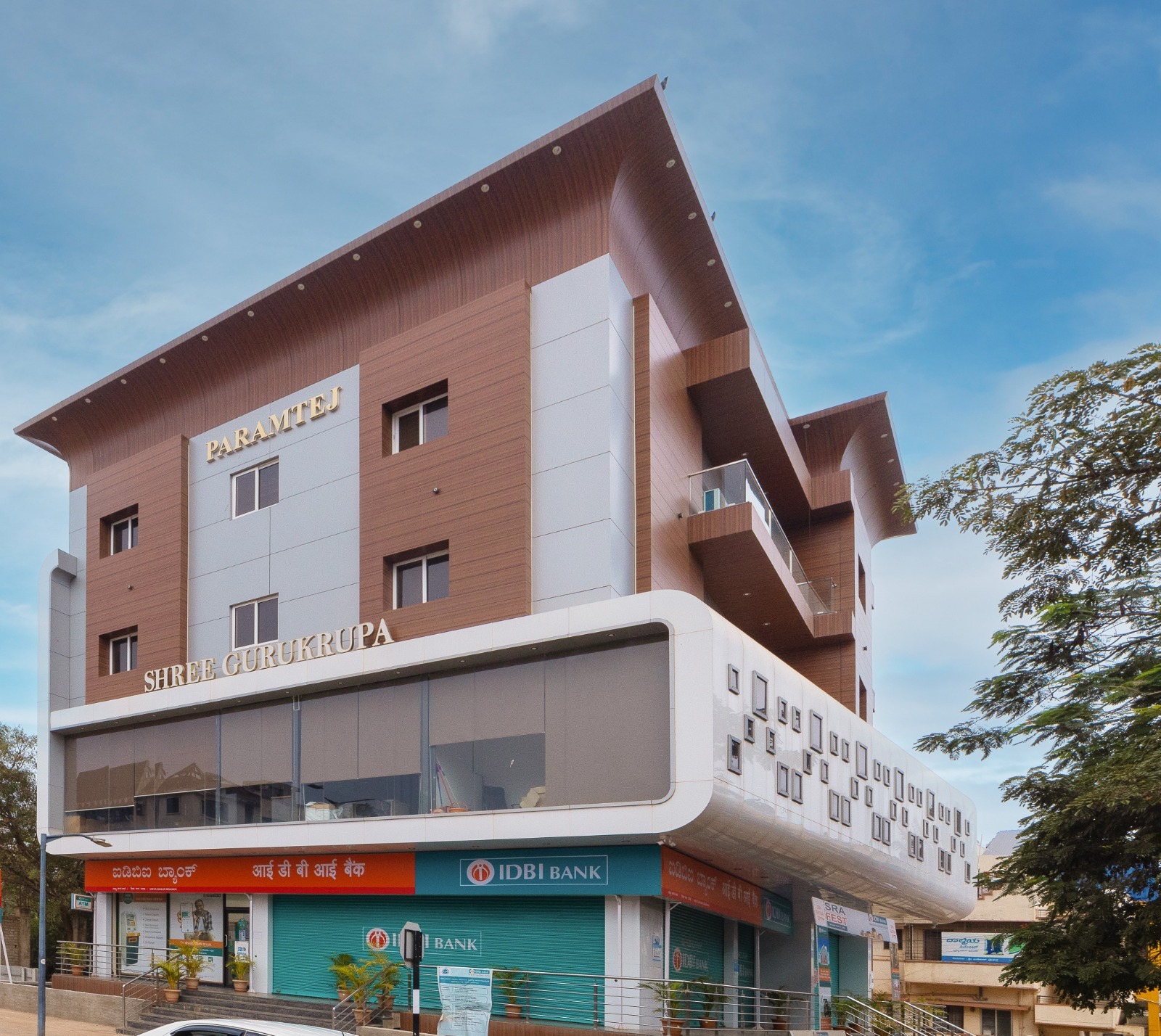


 en
en
 Spanish
Spanish Arabic
Arabic Swahili
Swahili French
French